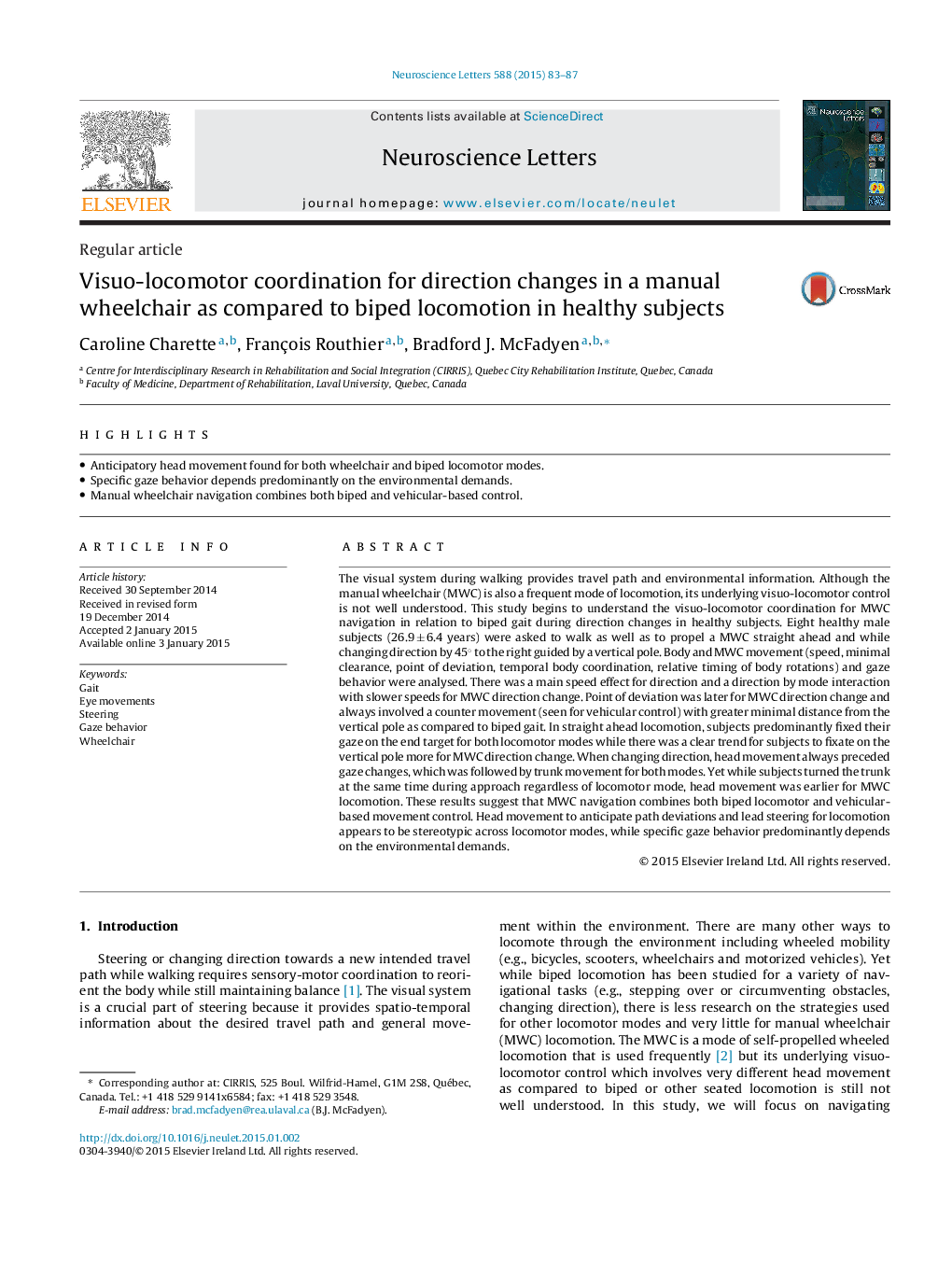| Article ID | Journal | Published Year | Pages | File Type |
|---|---|---|---|---|
| 6281289 | Neuroscience Letters | 2015 | 5 Pages |
Abstract
The visual system during walking provides travel path and environmental information. Although the manual wheelchair (MWC) is also a frequent mode of locomotion, its underlying visuo-locomotor control is not well understood. This study begins to understand the visuo-locomotor coordination for MWC navigation in relation to biped gait during direction changes in healthy subjects. Eight healthy male subjects (26.9 ± 6.4 years) were asked to walk as well as to propel a MWC straight ahead and while changing direction by 45° to the right guided by a vertical pole. Body and MWC movement (speed, minimal clearance, point of deviation, temporal body coordination, relative timing of body rotations) and gaze behavior were analysed. There was a main speed effect for direction and a direction by mode interaction with slower speeds for MWC direction change. Point of deviation was later for MWC direction change and always involved a counter movement (seen for vehicular control) with greater minimal distance from the vertical pole as compared to biped gait. In straight ahead locomotion, subjects predominantly fixed their gaze on the end target for both locomotor modes while there was a clear trend for subjects to fixate on the vertical pole more for MWC direction change. When changing direction, head movement always preceded gaze changes, which was followed by trunk movement for both modes. Yet while subjects turned the trunk at the same time during approach regardless of locomotor mode, head movement was earlier for MWC locomotion. These results suggest that MWC navigation combines both biped locomotor and vehicular-based movement control. Head movement to anticipate path deviations and lead steering for locomotion appears to be stereotypic across locomotor modes, while specific gaze behavior predominantly depends on the environmental demands.
Related Topics
Life Sciences
Neuroscience
Neuroscience (General)
Authors
Caroline Charette, François Routhier, Bradford J. McFadyen,
